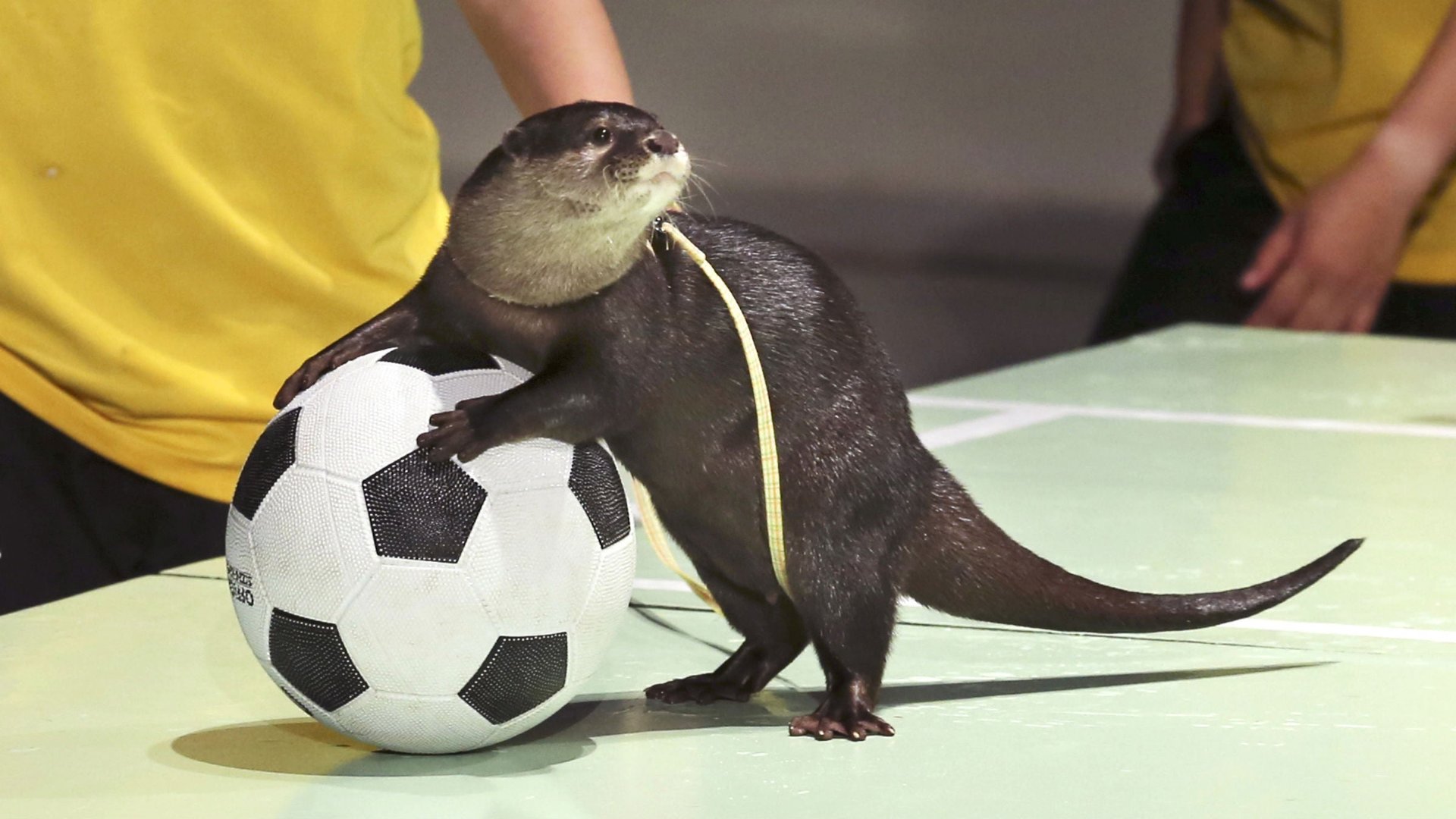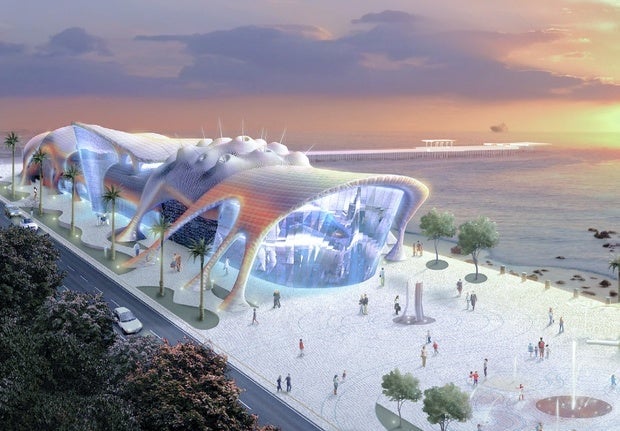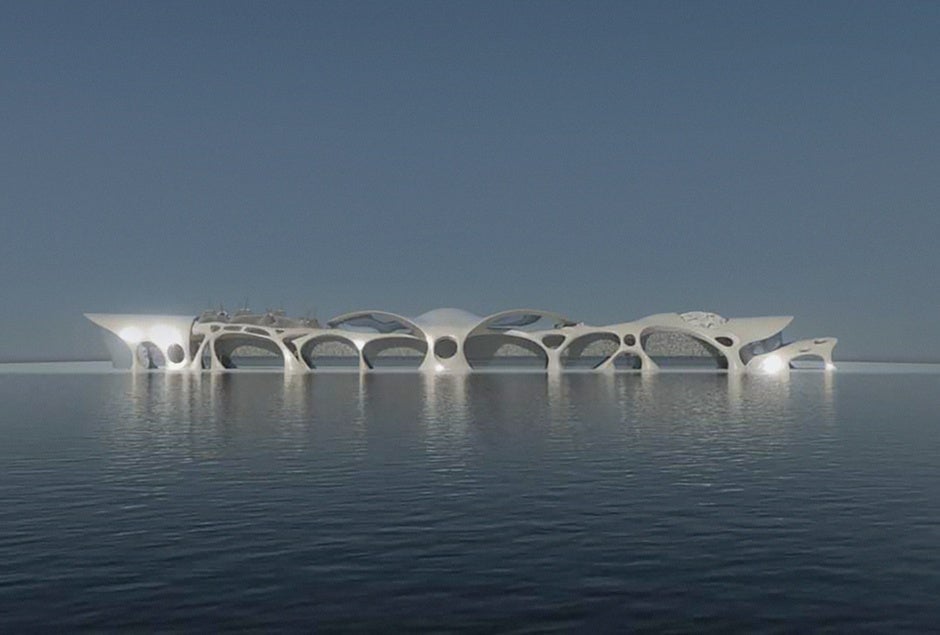Why the US is financing an $100-million aquarium in Brazil
Soon enough, Brazil will be able to boast the largest aquarium in South America. When it is completed in 2015, Acquario Ceará, a new public aquarium planned for the northeastern Brazilian city of Fortaleza, will easily be the world’s most recognizable aquarium—an architectural statement piece if there ever was one. It may also be the most truly American project in the Western Hemisphere. While the backers of Acquario Ceará are aiming to create a new design symbol for South America, it will be almost entirely a product of North America.


Soon enough, Brazil will be able to boast the largest aquarium in South America. When it is completed in 2015, Acquario Ceará, a new public aquarium planned for the northeastern Brazilian city of Fortaleza, will easily be the world’s most recognizable aquarium—an architectural statement piece if there ever was one. It may also be the most truly American project in the Western Hemisphere. While the backers of Acquario Ceará are aiming to create a new design symbol for South America, it will be almost entirely a product of North America.

The US is designing, engineering, constructing, and even financing Acquario Ceará—a design showpiece meant to drive tourism in the state of Ceará after the World Cup. In what has to be a global first, a US federal agency is building a blobitectural marvel on another continent in order to create jobs for small businesses at home.
The project is being designed by Leonardo Fontenele of Imagic Brasil, the Latin American division of the Cincinnati-based design firm Jack Rouse Associates. The key to the aquarium’s wild design is—plainly—the facility’s signature crustaceo-exoskeleton, which is being fabricated by Zahner, the same Kansas City, Missouri–based metals firm that executes titanium tapestries for Frank Gehry. The construction of the project is being overseen by International Concept Management, a small business and custom aquarium maker located in Grand Junction, Colorado. So, the otherworldly Acquario Ceará is basically a Midwestern export.

The Export-Import Bank of the United States is financing the aquarium’s construction through a $105 million direct loan, claiming that the transaction will support 700 jobs in the US, with most of the work going to small businesses. But the project—for which construction and fabrication work kicked off today—is not without controversy.
In Brazil, where critics say that the aquarium is being built without transparency, protestors launched a Facebook group called “Quem dera ser um peixe”—which translates to “I wish I were a fish” (a punny echo of a lyric by a popular Ceará-born singer, apparently). Elizabeth Duffield, a fellow at the SIT Graduate Institute, wrote a study confirming their fears. “Ceará, one of the poorest states in Brazil, is using public money, in part, to construct the aquarium while it has long standing social problems yet to be resolved,” she writes.
Meanwhile, in the US, it’s the very idea of the Export-Import Bank that’s under fire. Sen. Mike Lee (R-Utah) has long made it his mission to kill the bank. “The Export-Import Bank is another taxpayer-funded example of distorted public policy that further erodes Americans’ confidence in our markets and our system,” reads a statement on the senator’s website. “In short, ExIm Bank exists to dole out taxpayer-backed loan guarantees to help American exporters.”
What business is this project to anyone who isn’t a Brazilian bringing a civil suit against it, a fish, or Sen. Mike Lee? This aquarium looks like the latest example of the so-called Bilbao Effect—the notion that if you build an exorbitant museum or architectural project, then tourists will come and a flourishing city will follow. But recent research shows that the building boom of cultural facilities in the US between 1994 and 2008 hasn’t led to the gains that were promised for those institutions or the cities that host them. An aquarium isn’t a cultural facility, exactly—although this one sure looks like one, both in terms of design and the project’s ostensible aim.
According to Duffield’s research, in Brazil, multinational tourism development projects tend to exacerbate income inequality, with the benefits “leaking” away from local communities. That makes it a bad investment for Brazil, even if the US is picking up two-thirds of the roughly $150 million total cost for the project. It remains to be seen whether the project is a worthy investment for the Export-Import Bank. For a number of reasons, Duffield reports, Fortaleza lacks the cultural infrastructure to transform so quickly from a regional tourism hub to a global tourism center.
It may be a hell of an aquarium when it’s finished. But from a distance, it looks like two bad effects compounded: Bilbao Effect-meets-World Cup aspirational development.
This post originally appeared at CityLab. More from our sister site:
The housing market is improving, but there still aren’t enough affordable homes to go around